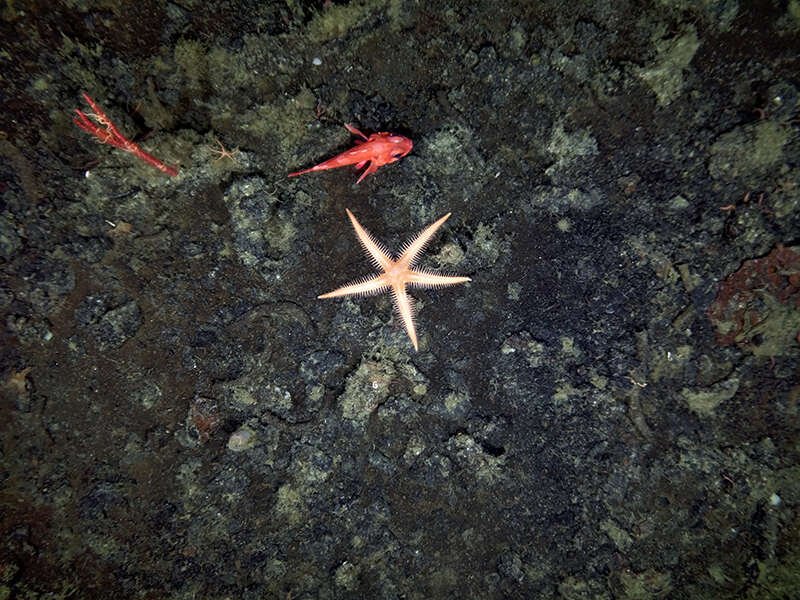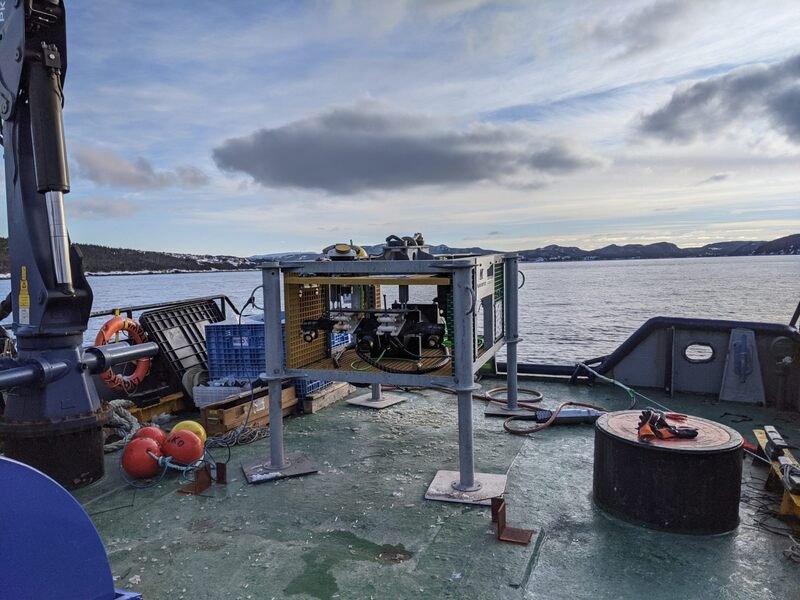What Are Common Depths for Subsea Imaging? Comparison of Subsea Cameras at Different Depths
Subsea imaging has been in practice for over 150 years. Since the early days of underwater image capture, the technology has greatly improved, allowing for researchers and scientists to collect video and image data from even the deepest parts of the ocean. Subsea imaging depths vary depending on what information is being collected and what tools are being used. In this article, both uses for subsea imaging systems and the tools that make underwater video and image data collection possible will be discussed.
Ocean Imaging and Exploration
The Earth’s surface is 70% covered by ocean. It is difficult to comprehend just how much of our planet is water without the use of satellite images taken from space. These images help put into perspective just how much water exists on Earth and therefore, how little we know about our own planet. In 2023, estimates of how much of Earth’s oceans have been explored range from 10-30%. The bulk of ocean exploration has taken place in the last decades as ocean exploration technology has improved, yet the deepest parts of the ocean are only in the early stages of exploration.
At great depths, the ocean presents many challenges for researchers and scientists including lack of light, extreme pressure, and harsh conditions. New and improved technologies are making deep sea exploration possible. High-quality sensors are now being designed and built for deployment at ocean depths as great as 6000m and beyond, including underwater cameras. Subsea cameras and imaging systems present an opportunity for ocean exploration and are being employed to help us understand our oceans, from the shallow waters and coastal regions to the very deepest points where few have ventured before.
Subsea Imaging at Various Ocean Depths
Ocean data collection presents a unique set of challenges. The ocean environment can be harsh and unpredictable. Even large, robust systems and vessels can be challenged by ocean conditions. Data collection tools must be rugged enough to withstand this environment, while also being small enough to deploy or integrate with a low power draw so it does not overtax the deployment platform. It must be easy to integrate, all while still providing high-quality data. Designing and building tools that meet these requirements is no small feat, but these are the demands of modern ocean data collection.
Traditionally, ocean data was collected by ship-based researchers, buoys, and drifters. While incredibly useful, these tools are limited in their scope. These deployments can only collect information that is relatively close to the surface and typically require personnel in order to be deployed and retrieved. These deployments also tend to be shorter in length as only some drifters and buoys are sufficiently robust to withstand harsh ocean conditions. Subsea cameras are quickly amassing a reputation as being one of the best solutions to ocean data collection due to their low power, robust design, easy integration, and ability to be completely autonomous or operated remotely.
Subsea cameras and imaging systems, such as those designed and built by SubC Imaging, provide data collection at depths ranging from shallow coastal waters to the seafloor. Shallow applications for ocean cameras include aquaculture and fish farm monitoring, as well as coastal and near-shore ocean observation. These deployments can range from a few meters below the surface to areas as deep as 500m. SubC Imaging systems take into account that light can distort image data at shallow depths and offer a series of easily integrated lights and lasers to prevent this.
Deep-water applications for subsea cameras include seafloor mapping and imaging, ocean archeology, and deep-water exploration. Subsea cameras are easier to deploy and operate than sonar systems, so many are opting to use cameras for seafloor mapping. Cameras provide cost savings and the data collected is photo-realistic. Ocean archeology is an emerging field and subsea cameras are making exploring and documenting these sites possible.
Subsea cameras and imaging systems are gaining popularity as an alternative to sonar seafloor mapping. Because these systems are compact and easy to deploy, while delivering high-quality ocean imaging data, many are turning to underwater cameras for their mapping and imaging needs. While the data delivered is comparable in quality, the cost and time savings to the user are substantial. Camera mapping systems can be deployed from a small vessel, require little to no specialized equipment for deployment and retrieval, and do not need specialists to collect and decipher the data.
Subsea Camera Comparison
Underwater or waterproof cameras made for the everyday consumer can be submerged to depths of roughly 8-10 ft. While great for snapping shots on vacation, the depth is far too limited for ocean research and marine observation. Specialized subsea cameras for ocean exploration typically have depth ratings between 300m and 500m. These subsea cameras are typically used in coastal regions or integrated into AUVs or ROVs. Cameras such as the Rayfin Coastal, designed and built by SubC Imaging, provide exceptionally clear, 4K video and image data. They are often used for coastal ocean observatories and ocean archeological exploration.
Advancements have been made in ocean technology that enables sensors to go to great depths without sacrificing data quality. Through the use of titanium housing and smart design, subsea cameras are reaching depths previously left untouched. Cameras such as the Rayfin MK2 Benthic camera or 1Cam Mk6, designed and built by SubC Imaging, can be deployed at depths as great as 6000m. Even at 6km below the surface, the Rayfin MK2 Benthic camera can collect high-quality data in real-time. This camera even allows the user to adapt on the fly with zoom and live colour options as well as various video formats, all controlled top side by the user.
See a Head-to-Head Comparison of SubC’s Cameras
Subsea Camera Integration
Ocean exploration and marine observation have traditionally been performed in coastal regions and shallow depths. Researchers were limited by tools and technology as many sensors required personnel to operate them, and subsea vehicles were expensive and bounded by depth. Now, many subsea sensors are either autonomous or are responsive to real-time direction. Subsea vehicles such as ROVs, AUVs, and drones are now able to withstand the extreme pressure and conditions of the deep-sea environment. Even crewed submersibles are making the journey to the deepest areas of the ocean. With these improvements in technology, deep sea ocean exploration, and data collection is becoming easier and access to high-quality ocean data is better than ever. Sensor improvement and integration are the keys to the removal of these barriers.
Modern subsea camera and imaging systems are lightweight and very low power, putting little strain on the submersible, drone, AUV, or ROV it is integrated with. These systems, like those created by SubC Imaging, also provide data storage, separate from the vehicle. These two essential traits mean that ocean video and image data can be collected without compromising the platform through power draw, and without requiring large data storage to be provided. This makes subsea camera systems the ideal tool for integration.
The characteristics that make camera systems among the easiest tools to integrate into subsea vehicles, also make these systems perfect for ocean observatories. Like NASA, governments, organizations, and institutions all around the globe are eager to understand more about our oceans. Ocean Observatories, platforms that combine several sensors to generate a complete picture of an ocean environment, are being built in an effort to help explore the oceans as well as understand any changes occurring. Due to a large number of sensors and tools that must work together in order to collect data, power and data storage always present an obstacle. Choosing tools that are low-power and lightweight is key to an observatory’s success. These tools must also be able to reliably collect high-quality data that is either small in file size or can be stored within the tool itself. Subsea cameras and imaging systems, like the Observatory Camera System that harnesses the power of the Rayfin Mk2 Benthic camera, are integrated into ocean observatories around the world such as the Holyrood Ocean Observatory in Newfoundland, Canada. As part of this platform, the Rayfin camera is capturing ocean video and image data in 4K, allowing researchers to better understand this under-explored area.
The Holyrood Ocean Observatory, seen here before deployement, is being used to gather information about Newfoundland’s aquatic environment.
Conclusion
Subsea cameras and imaging systems are evolving to best suit the needs of users around the world. Researchers and scientists can now collect and view data from the surface to the seafloor without compromising data quality or compromising their vehicle or platform. As ocean exploration progresses and we learn more about the ocean environment, subsea cameras will continue to build a reputation as being reliable effective tools at any and every depth.







